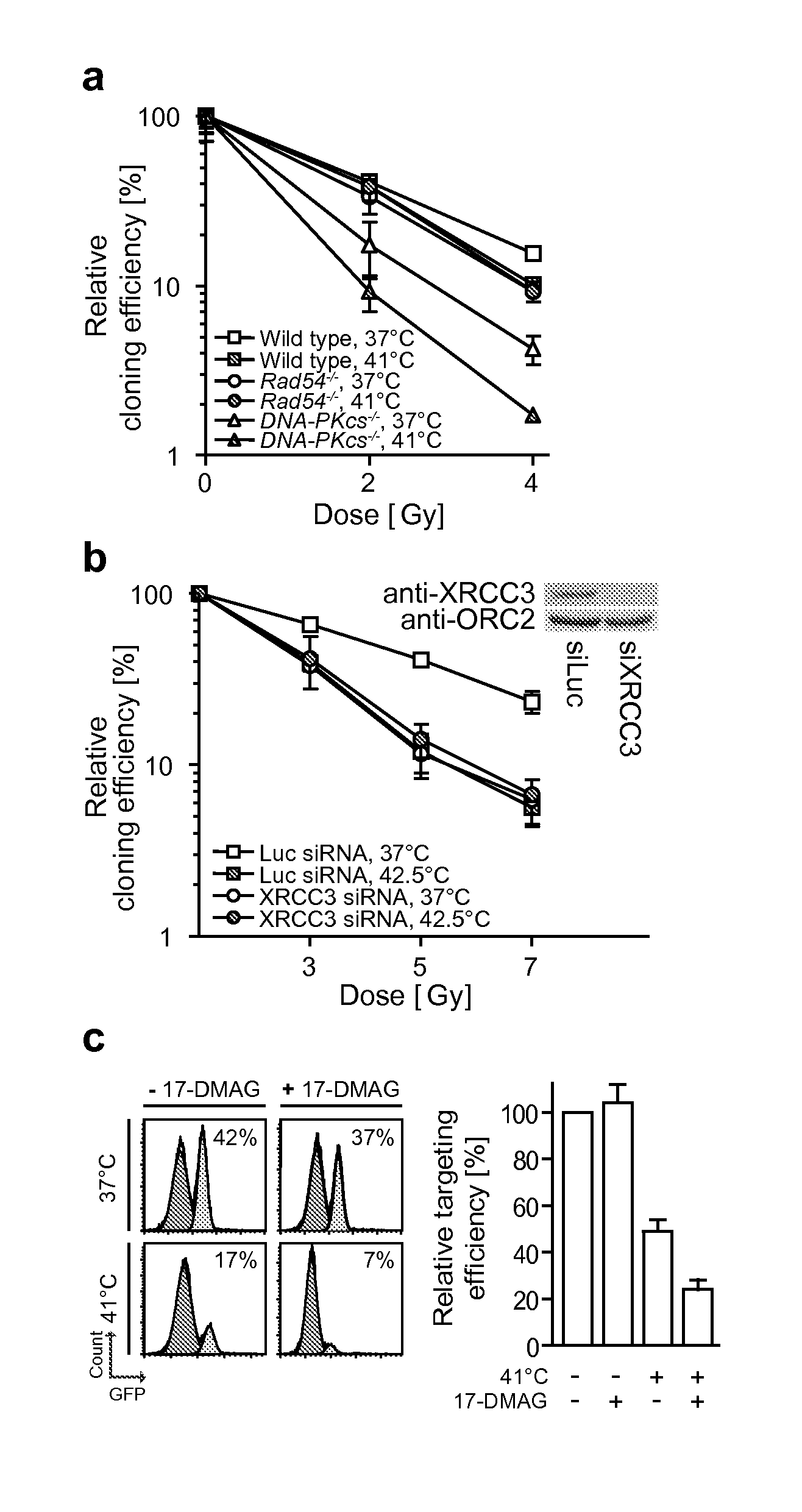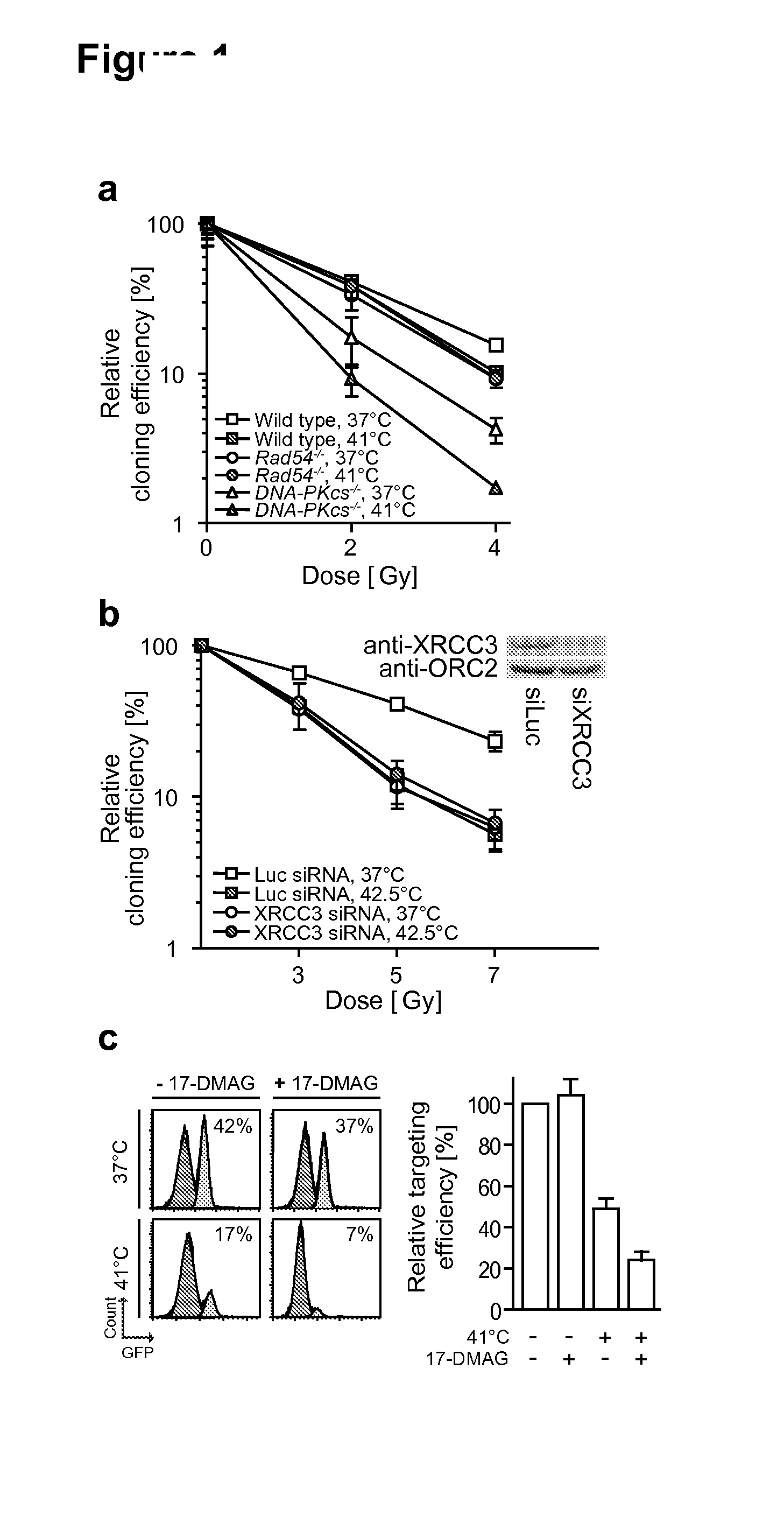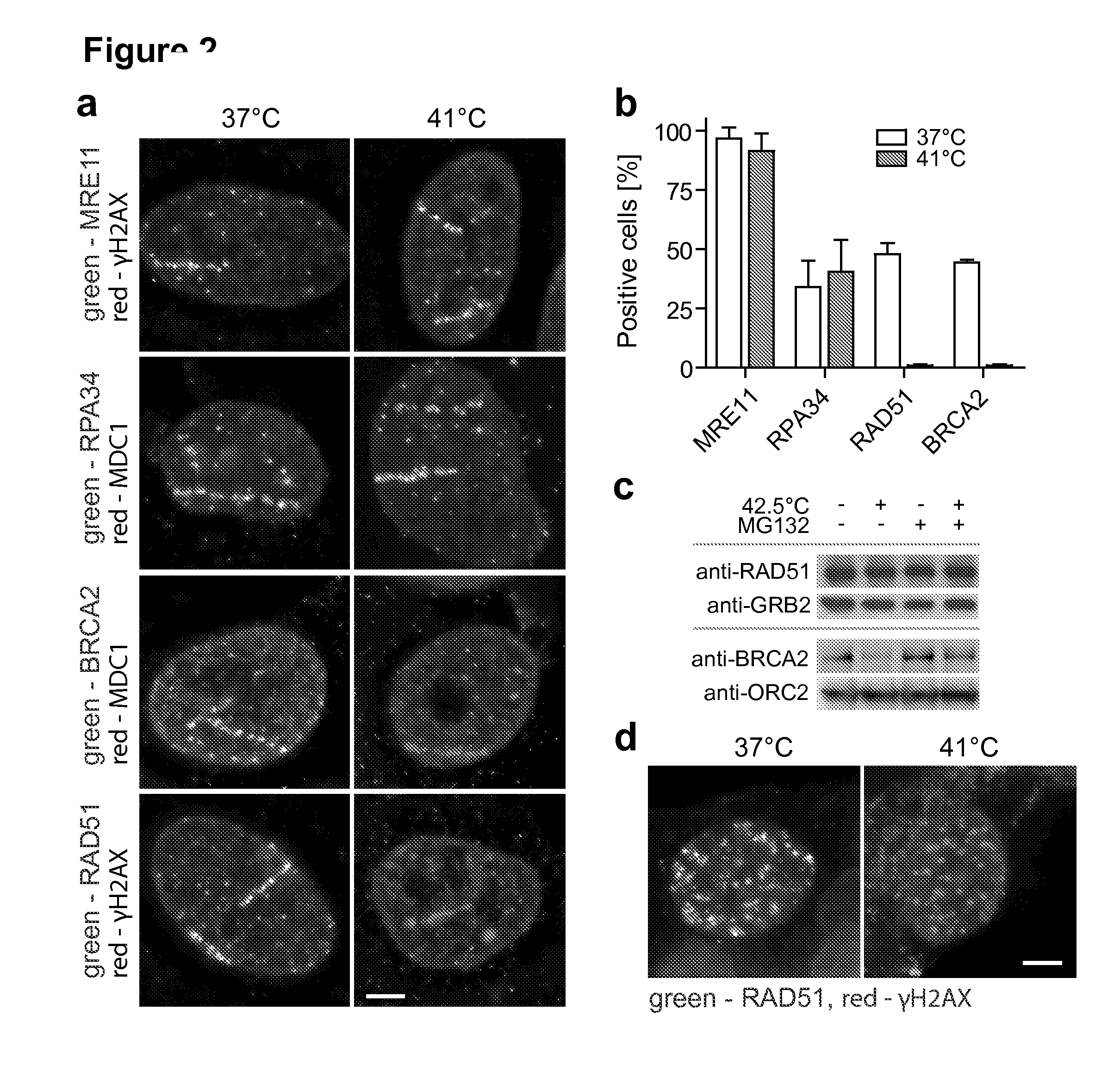Method of treating cancer
a cancer and cancer technology, applied in the field of cancer treatment, can solve the problems of insufficient attention to the interaction between hyperthermia and hereditary breast cancer, and achieve the effect of reducing the level of brca2
- Summary
- Abstract
- Description
- Claims
- Application Information
AI Technical Summary
Benefits of technology
Problems solved by technology
Method used
Image
Examples
example 1
Inhibition of BRCA2-Mediated Double-Strand Break Repair in Mammalian Cells
Cell Culture.
[0124]Embryonic stem (ES) cells were cultured on gelatin-coated dishes in a 1:1 mixture of Dulbecco's modified Eagle's medium (DMEM) and buffalo rat liver conditioned medium, supplemented with 10% FBS (Hyclone), 0.1 mM nonessential amino acids (Biowhittaker), 50 mM β-mercaptoethanol (Sigma) and 500 U ml-1 leukemia inhibitory factor. Other cells were cultured in following media, supplemented with 10% (v / v) FCS and streptomycin / penicillin: 1:1 mixture of DMEM and Ham's F10 (HeLa), DMEM (human melanoma [BLM], osteosarcoma [U2OS], cervix carcinoma cells), L-15 (human squamous lung carcinoma [SW-1573]), Eagle's MEM (mouse osteosarcoma [MOS], rat rhabdomyosarcoma [R1]). Cells were maintained at 37° C. in an atmosphere containing 5% (HeLa, BLM), 10% (U2OS, cervix carcinoma cells), 2% (R1) or 0% (SW-1573) CO2. Patients with cervical cancer expressed written informed consent to provide fresh biopsies durin...
example 2
In Vivo Tumour Load Reduction by a Combination of Hyperthermia, AZD2281 (PARP-1 Inhibitor) and 17-DMAG (HSP90 Inhibitor)
[0140]Tissue culture results are extended to in vivo situations by performing experiments using the syngenic rhabdomyosarcoma rat model (Van Bree et al., Int J Hyperthermia, 1999).
[0141]An amount of 3×106 rhabdomyosarcoma cells are injected subcutaneously into both flanks of mature WAG / Rij rats. Within 3 weeks, the animals develop tumours of 1500 mm3, at which point the tumours are surgically removed, cut into fragments of 1 mm3, and single fragment are implanted into one or both hind legs of adult rats. The animals are divided into groups (see below). After 3 weeks, the implanted tumours reach ˜200 mm3. At this point, the animals receive different treatments for 4 weeks at intervals of 3 days as indicated below:
[0142]Group 1: Sham hyperthermia treatment (HT) (n=4, 2 tumors per animal)
[0143]Group 2: HT only (90 min incubation in a waterbath set at 42° C., n=4, tumo...
example 3
In Vivo Tumour Load Reduction by a Combination of Hyperthermia, AZD2281 and / or PJ-34 (PARP-1 Inhibitors) and 17-DMAG (HSP90 Inhibitor)
[0155]Tissue culture results are extended to in vivo situations by performing experiments using the B16BL6 melanoma tumor model (Hart I. R. Am J Pathol. 1979. 97(3):587-600; Ten Hagen T. L. and Eggermont A. M. Int J Hyperthermia. 2008. 24(3):291-9). Tumors are grown as xenografts in the flanks of nude mice. Animals are injected subcutaneously in both sides with 106 B16BL6 cells. Within 3 weeks, the animals develop tumours of approximately 300 mm3, sufficient to yield tumor tissue for implantation of tumor sections of about 5×106 cells subcutaneously in the hind leg of mice. After 3 weeks, this strategy results in ˜75% of tumor-take and tumor dimensions of ˜200 mm3.
[0156]Animal groups bearing tumors are then injected intraperitoneally with various combinations of vehicle, AZD2281 and / or PJ-34 (PARP-1 inhibitors) and 17-DMAG (HSP inhibitor). Initial dos...
PUM
| Property | Measurement | Unit |
|---|---|---|
| temperature | aaaaa | aaaaa |
| temperature | aaaaa | aaaaa |
| temperatures | aaaaa | aaaaa |
Abstract
Description
Claims
Application Information
 Login to View More
Login to View More - R&D
- Intellectual Property
- Life Sciences
- Materials
- Tech Scout
- Unparalleled Data Quality
- Higher Quality Content
- 60% Fewer Hallucinations
Browse by: Latest US Patents, China's latest patents, Technical Efficacy Thesaurus, Application Domain, Technology Topic, Popular Technical Reports.
© 2025 PatSnap. All rights reserved.Legal|Privacy policy|Modern Slavery Act Transparency Statement|Sitemap|About US| Contact US: help@patsnap.com



